Bovet makes extraordinary watches. That is an absolute fact.
But what happens when Bovet decides to take its extraordinary know-how in craftsmanship and put it to good use in a svelte stainless steel watch that is simultaneously the brand’s new entry-level timepiece?
What comes out in the end might also be extraordinary. Even at a price of just 16,800 Swiss francs ($19,300).
But let’s back up a second: why do I say this is a lot of watch? The answer originates in the year 2006 when Pascal Raffy bought movement supplier STT, which he rechristened Dimier. He had already purchased the Bovet brand in 2001.
The exquisite acquisition comprised all of what belonged to the company formerly known as STT and included: STT Complications SA (previously known as Progress), a company that developed and produced tourbillons; STT Mechanical Movements SA, movement producers; STT SPIR-IT for manufacturing balance springs; STT Watch U License, the firm that owned all of STT’s intellectual property; and Aigat, a stamping company.
Raffy moved all of this under one roof in the Tramelan, Switzerland factory, thoroughly renovated it, and gave the new combined manufacturer the name Dimier 1738.
Putting all of these companies under one roof ensured complete self-sufficiency that even now, nine years later, surpasses most companies’ definition of the word manufacture in the modern age.
And Raffy additionally owns a minority share of Aubert Complications, based in the Vallée de Joux near Le Lieu, a workshop that has assembled delicate complications since 1872.
Poised and ready
Today finds Bovet poised to be able to play with the big boys of horology: the brand makes all of its own movements (save the chronograph, but that is slated to arrive in 2018) and even the majority of the components within those movements (including the most sensitive of them all: the hairspring).
Bovet also masters the decorative métier d’art crafts it needs to beautifully embellish its fine dials, movements, and cases.
Since 2012, DKSH, the leading market expansion service in Asia, which is headquartered in Zurich, has been a minority shareholder in Bovet. Because of Bovet’s roots as one of the first Swiss watch companies to export to China (“bovet” actually became the word for “watch” in Chinese), the brand is a shoe-in to do well there with the right distribution.
Remaining poised
For the time being Bovet remains poised, ready to pounce. But it hasn’t necessarily sunk its claws into the watch connoisseur’s consciousness yet like it probably should given the beauty, history, and technical prowess of its wristwatches.
Why not?
Well one reason could be the company’s obvious lack of strategized and organized communication. Another could be the absence of visible distribution in key horological tastemaker markets. Yet another could be that the brand’s highly decorative house style just isn’t what captivates the eye of the solvent consumer at this time of uncertain economical environments.
And then there is the fact that Bovet chooses not to take part in any of the annual fairs like SIHH or Baselworld (although it does on occasion exhibit outside of the fairs) – and not even the consumer-oriented regional fairs that have become so important to bringing watch information to prospective local consumers.
And yet another could simply be the very high prices that the pieces in Bovet’s annual production of approximately 3,000 units commands. This is not to say that those prices are not justified. They certainly are. Just have a look, for example, at the intense aesthetics of the Braveheart tourbillon introduced early in 2015 in The Bovet Amadeo Fleurier Braveheart: Two Brave Hearts Are Better Than One and Give Me Five! From The 2015 Bovet Collection.
Long story short, this is likely an excellent time to introduce a watch as aesthetically pleasing – both back and front – with pared down visuals as the 19Thirty. And at its particular price point, which I cannot reiterate enough is simply astounding.
19Thirty
At a lovely luncheon hosted by Asprey in London, Raffy personally introduced his new 19Thirty collection. The location of this event was well chosen, for Bovet successfully works with the traditional London retailer who carries very few watch brands among its in-house silverwares, leather products, jewelry, and china. One of the other brands it does carry is Rolex.
The brand-new 19Thirty collection already offers 18 references at its launch, partially due to the fact that it is offered in two Bovet cases: the convertible Fleurier case, which looks a bit like a pocket watch with its bow and crown at the 12 o’clock position and can be worn as a wristwatch or a pendant and even used as a table clock; and the more standard-looking Dimier case with the crown at the usual 3 o’clock position, which functions only as a wristwatch.
Both cases in this collection are offered solely in stainless steel, but the really cool thing is that both of the cases are quite svelte thanks to the dedicated, flat caliber inside. At 42 x 9.05 mm, the case actually borders on the official definition of ultra-flat.
The front of the 19Thirty comprises two subdials, one for the hours and minutes, and one for the seconds – the latter has been given its own platform so that it can put the accuracy of its chronometry on display, according to Raffy. These subdials are available in three colors: cold enamel ivory, a distinctive blued steel that is unlike any other hue of blue that I have seen, and black circular brushed. The owner can also choose between Arabic, Roman, and Chinese numerals.
The dials stand out intensely against the silver color of the rhodium-plated base plate that serves as the background here. The plate just barely reveals an impressive seven-day power reserve indication, which sits above the single spring barrel. The entire plate is finished with a circular côtes de Genève pattern, which adds a bit of movement to the dial by catching the light and playing with it.
Turning the watch over, we are treated to a full view of Caliber 15BM04, which was specifically manufactured for this new collection. The harmoniously designed movement’s fine finishing stands up to even the closest scrutiny with a large loupe (yes, I did that).
19Thirty?
The name 19Thirty is unusual enough to warrant a few lines about it. It – and indeed the whole collection – was inspired by a 1930s pocket watch from Raffy’s own personal collection. Raffy describes this pocket watch as an “easel” chronometer, which most likely refers to the stand that comes out of the back resembling an easel and allows the timepiece to stand on a surface like a desk clock. Bovet’s changeable Fleurier cases also boast this element.
This particular 1930s pocket watch was one of the last manufactured by Bovet before wristwatches became ubiquitous. Raffy pinpoints this decade as the one in which the changeover from pocket time to wrist time was completed.
For more information, please visit www.bovet.com/19thirty.
Quick Facts
Case: 42 x 9.05 mm, stainless steel
Movement: hand-wound Caliber 15BM04 with seven days’ power reserve and one single spring barrel
Functions: hours, minutes, seconds; power reserve indication
Price: 16,800 Swiss francs / $19,300
Leave a Reply
Want to join the discussion?Feel free to contribute!






















































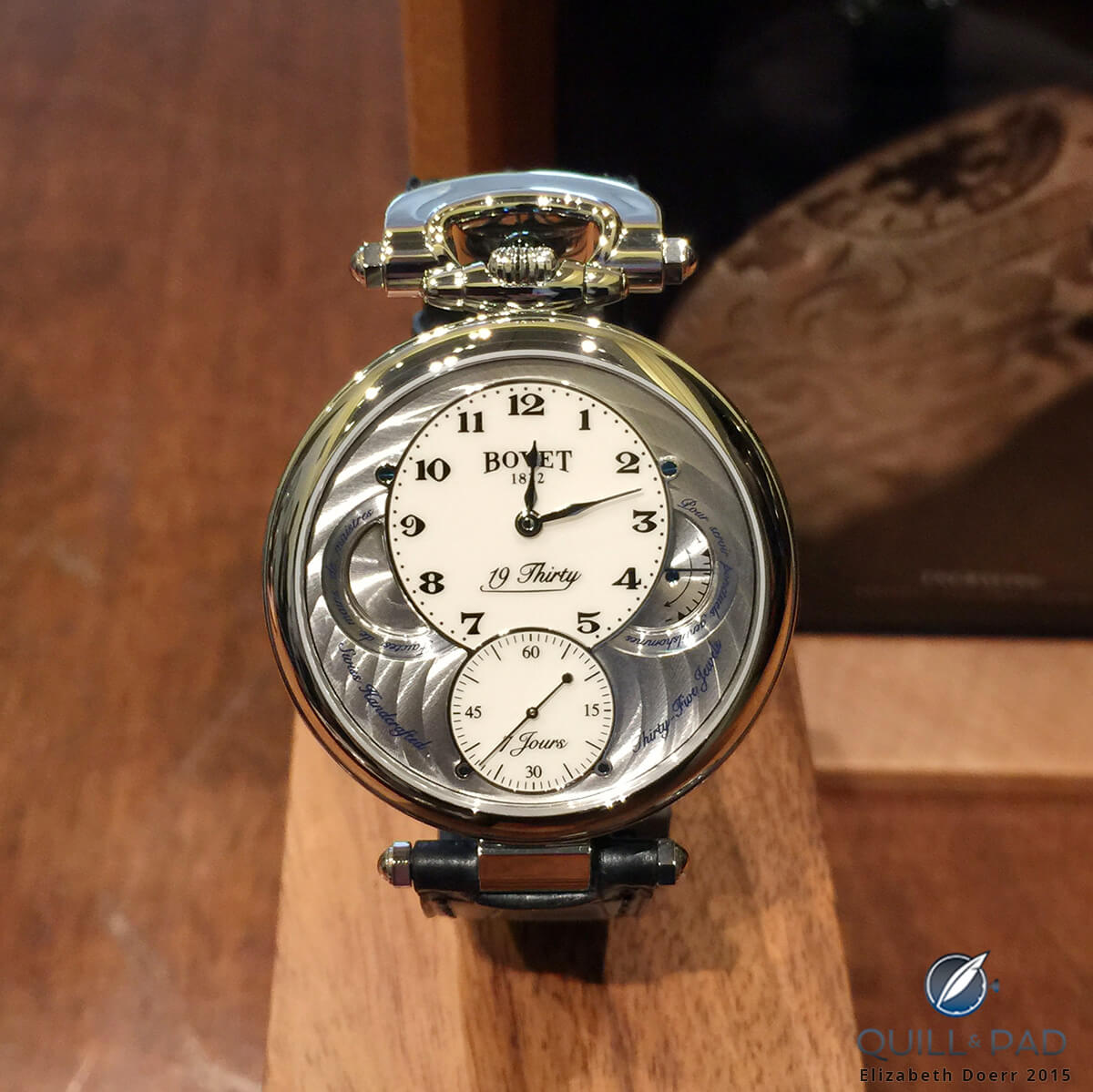
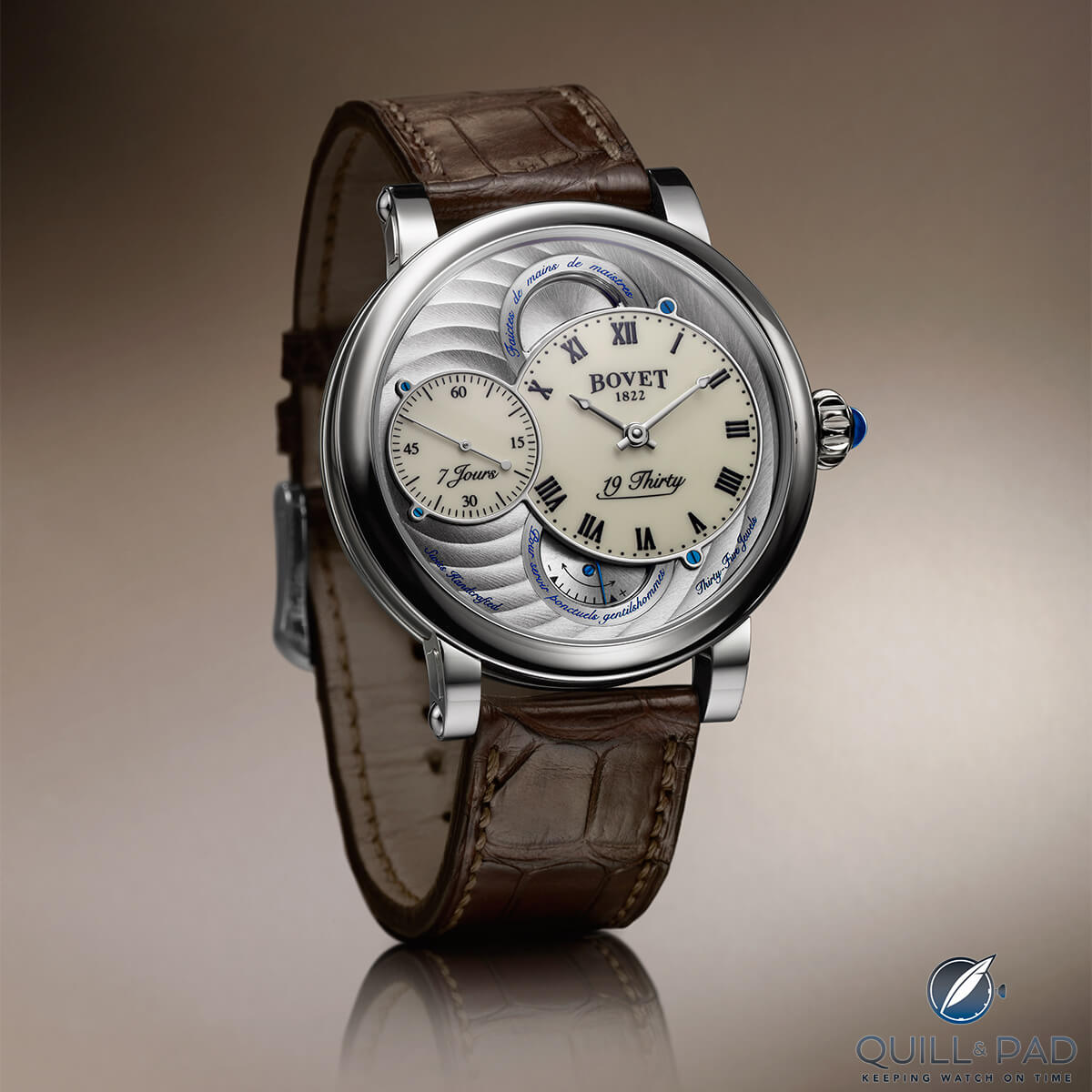
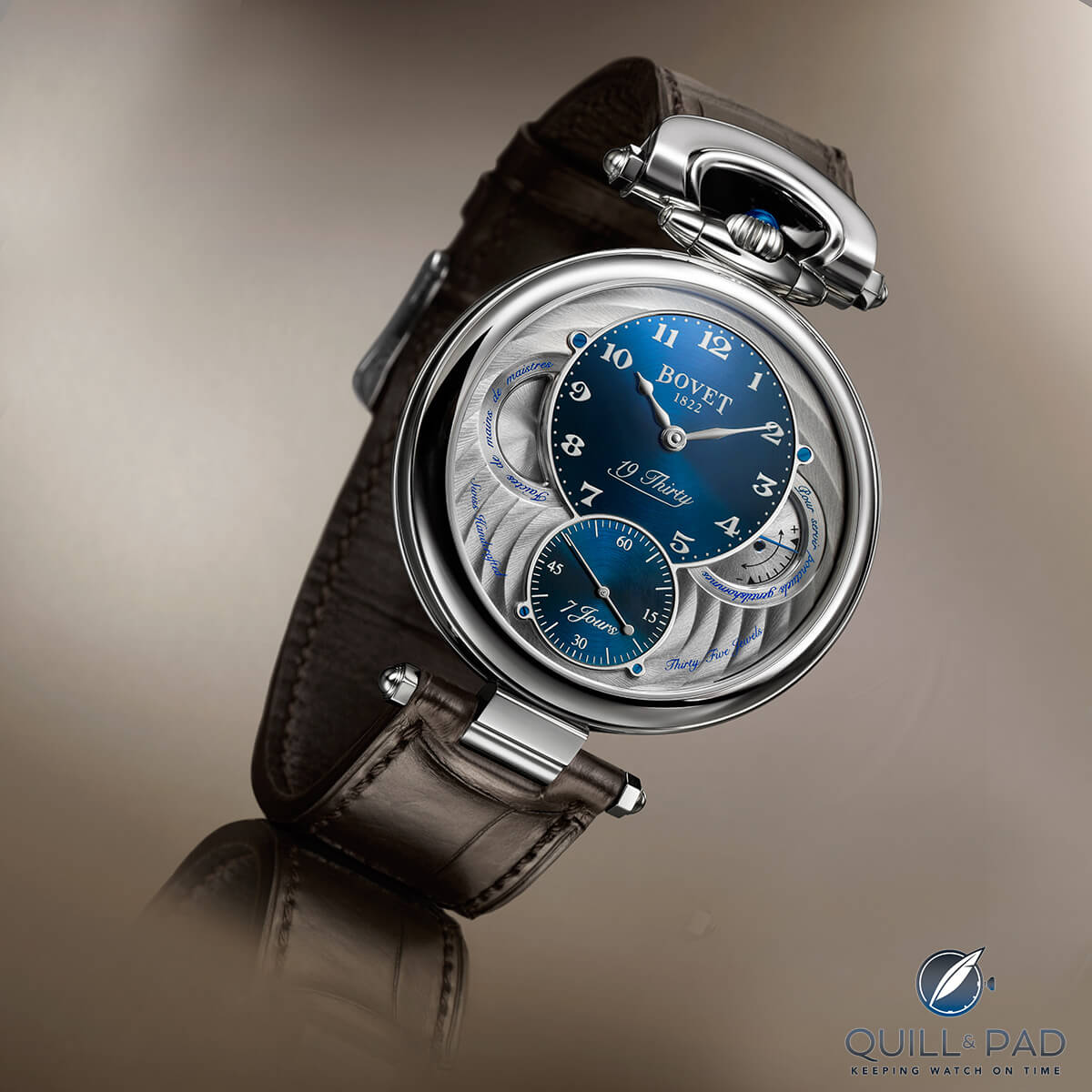
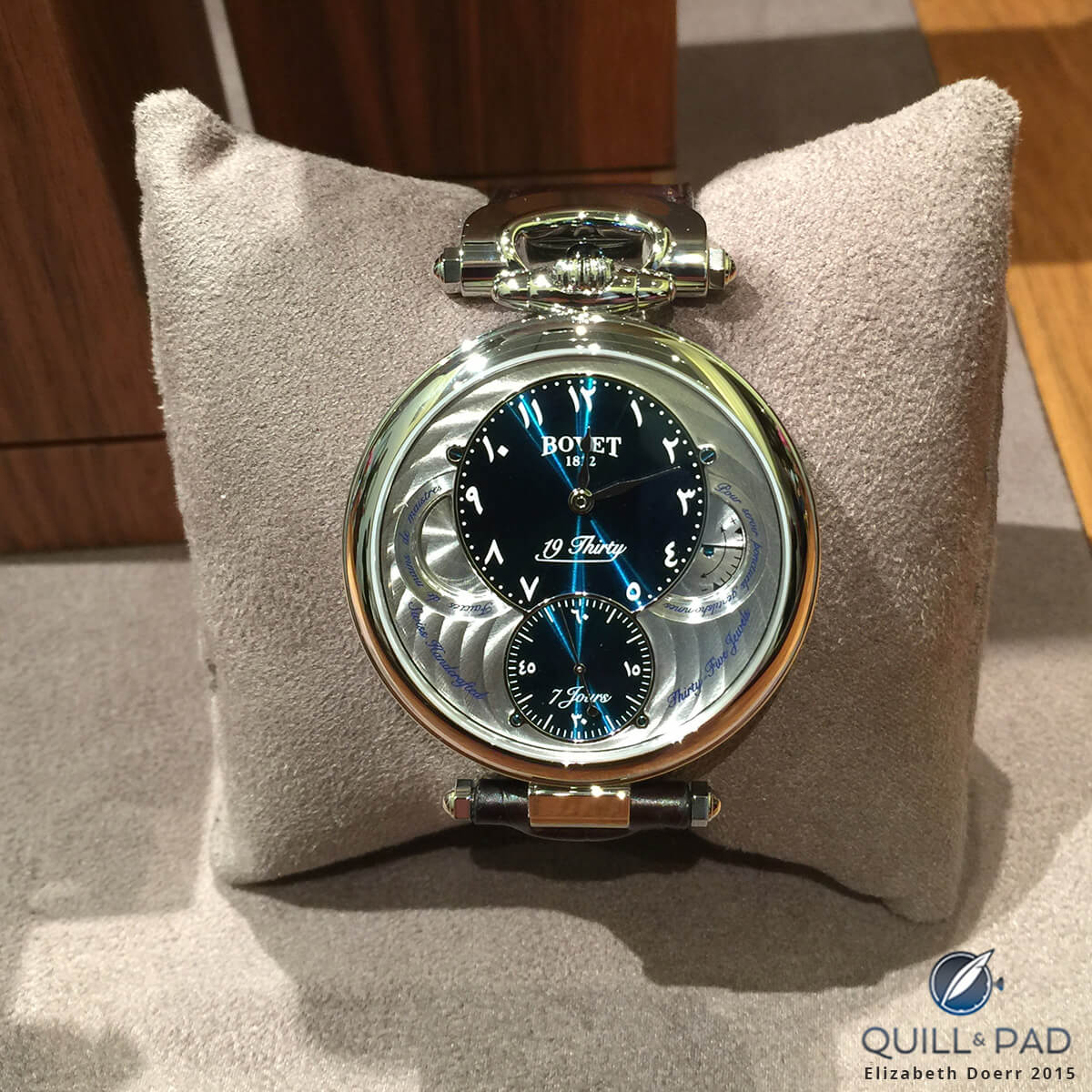
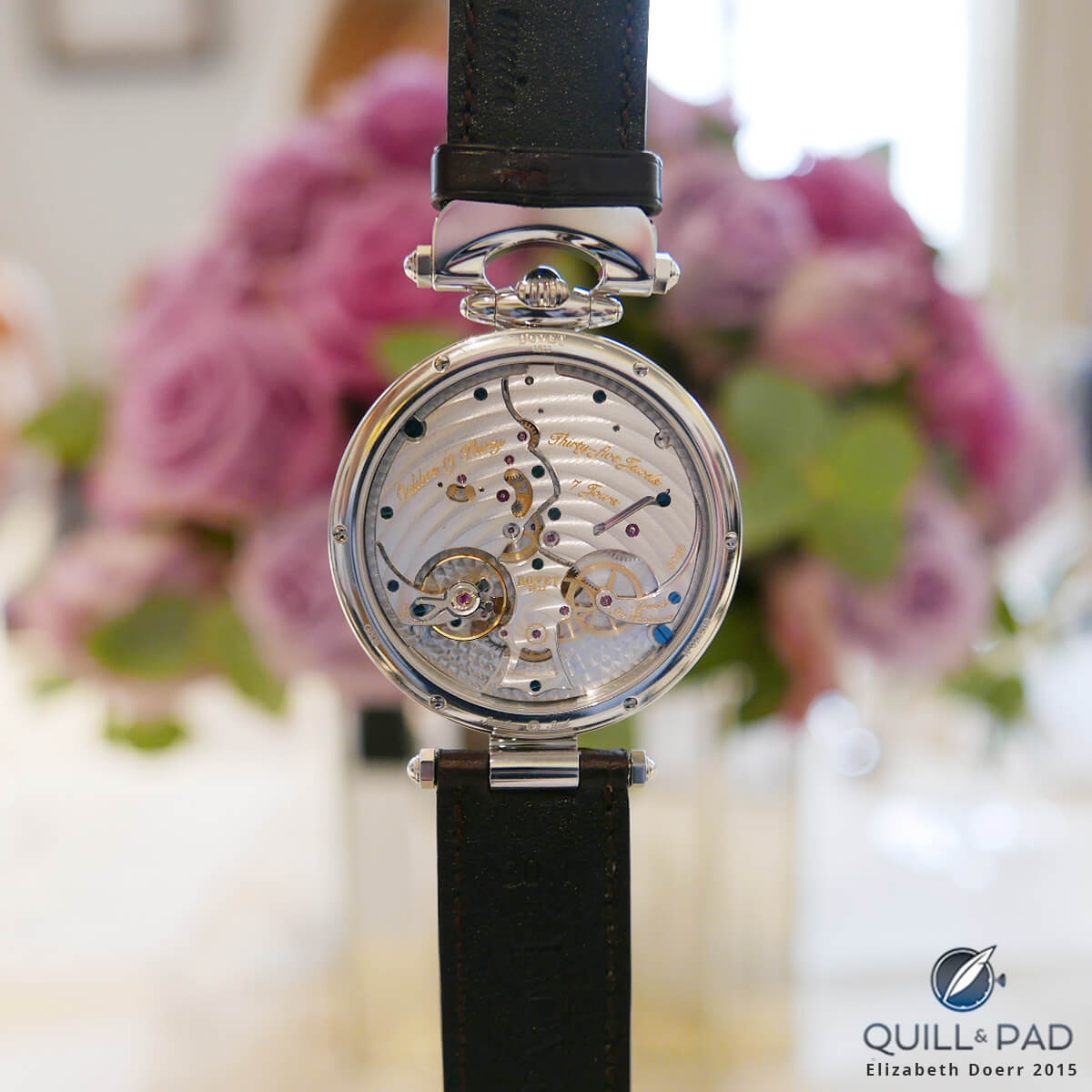
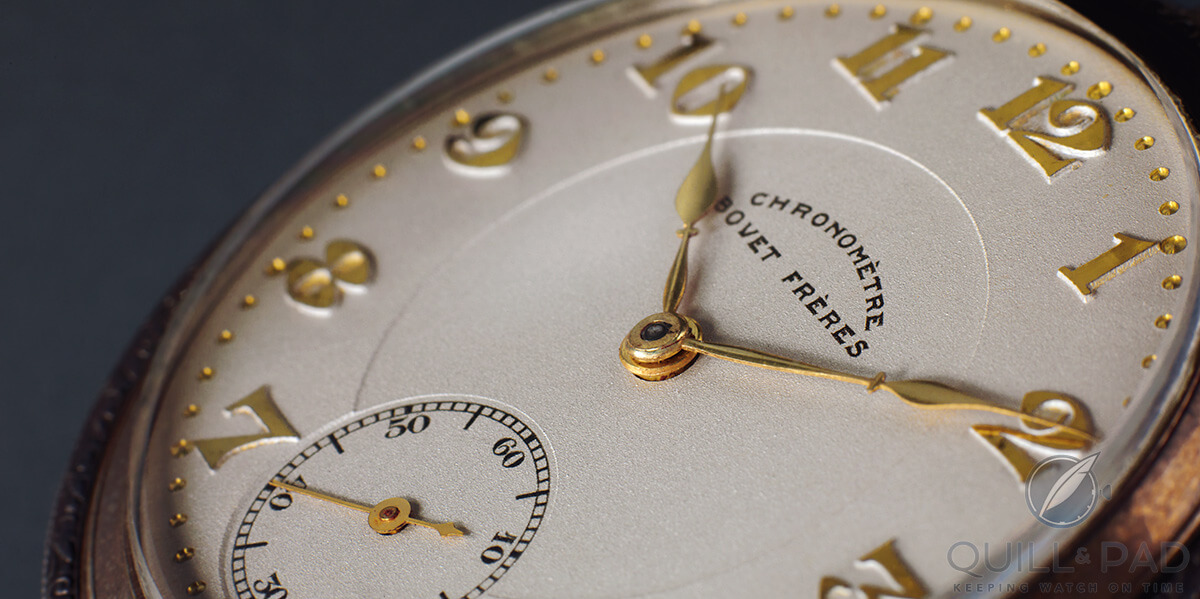
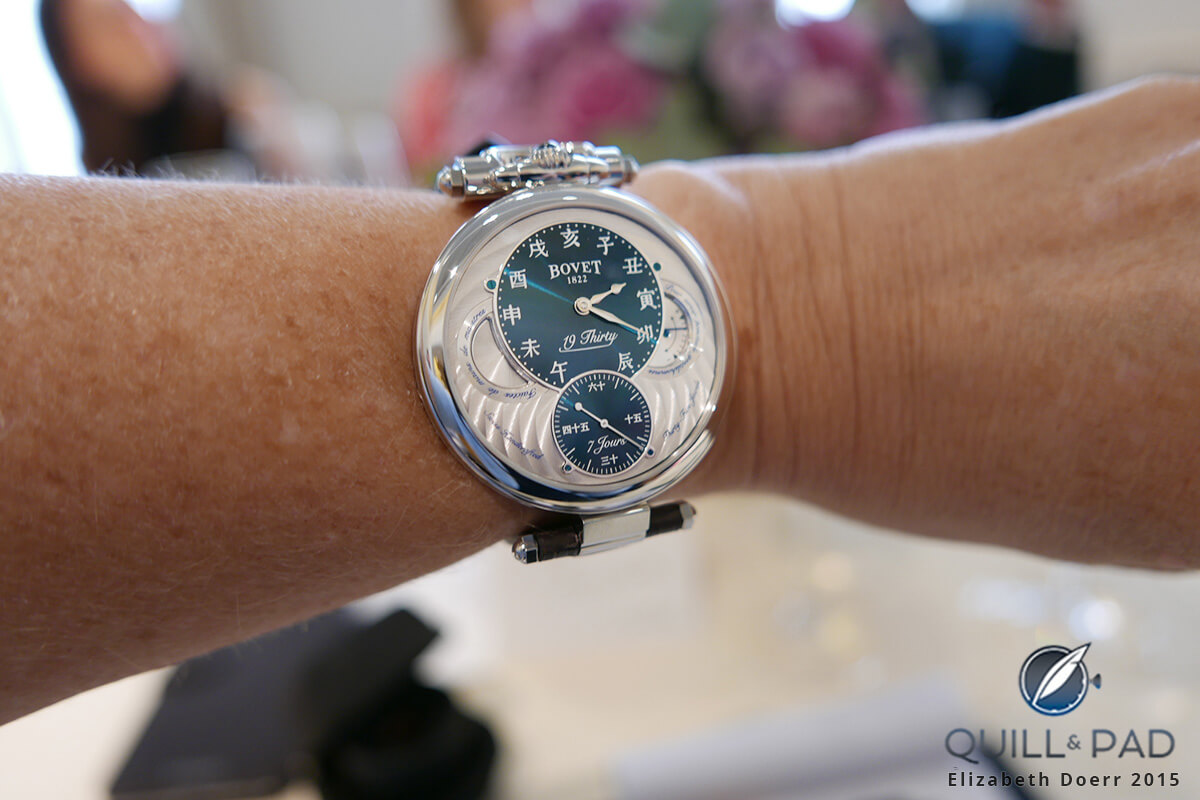
dear sir,
how are u.i want know about blued steel dials watch and how much praice.
thanks and best regards.
kamruzzaman khan.
mobile: +966564848339.
I’m sorry, but we do not sell watches. Please contact Bovet for details on how to purchase this timepiece at http://www.bovet.com.